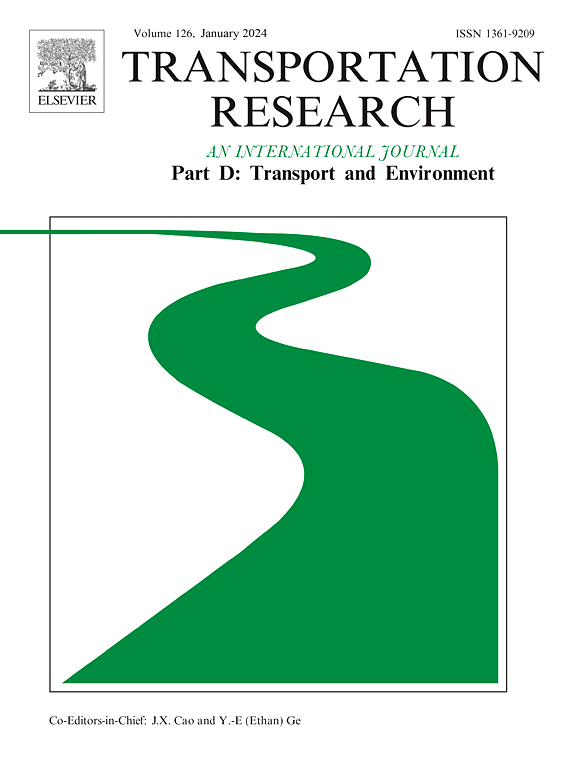包容性流动枢纽:深入探讨弱势群体的需求
IF 7.3
1区 工程技术
Q1 ENVIRONMENTAL STUDIES
Transportation Research Part D-transport and Environment
Pub Date : 2024-10-04
DOI:10.1016/j.trd.2024.104447
引用次数: 0
摘要
交通枢纽在城市交通系统中的重要性与日俱增,因为它们具有提高可持续性和减少交通劣势的潜力。然而,文献尚未明确弱势群体对交通枢纽的使用情况,也未深入揭示他们对顺利使用交通枢纽的要求。为了填补这一知识空白,本定性研究采用了 "能力法 "来深入调查弱势群体对使用交通枢纽的要求。数据是通过 45 个半结构式访谈和 4 个焦点小组获得的,访谈对象是欧洲四个地区的当地专家和流动枢纽的潜在用户或当前用户:布鲁塞尔、慕尼黑、鹿特丹-海牙和维也纳。结果确定了八大类要求及其在弱势群体中的普遍程度。研究结果提出了若干建议,以支持决策者和从业人员开发包容性的交通枢纽。本文章由计算机程序翻译,如有差异,请以英文原文为准。
Inclusive mobility hubs: An in-depth exploration of the requirements of disadvantaged groups
Mobility hubs are becoming increasingly relevant in urban transport systems because they have the potential to enhance sustainability and decrease transport disadvantages. However, the literature has not yet identified the use that disadvantaged groups make of mobility hubs, nor has it thoroughly revealed their requirements for using them without difficulties. As a means to fill this knowledge gap, this qualitative study applied the Capabilities Approach to thoroughly investigate the requirements of disadvantaged groups concerning the use of mobility hubs. The data was obtained through 45 semi-structured interviews and four focus groups with local experts and potential or current users of mobility hubs in four European regions: Brussels, Munich, Rotterdam-The Hague and Vienna. As a result, eight main categories of requirements and their prevalence among disadvantaged groups were identified. The findings contain several recommendations to support decision-makers and practitioners in developing inclusive mobility hubs.
求助全文
通过发布文献求助,成功后即可免费获取论文全文。
去求助
来源期刊
CiteScore
14.40
自引率
9.20%
发文量
314
审稿时长
39 days
期刊介绍:
Transportation Research Part D: Transport and Environment focuses on original research exploring the environmental impacts of transportation, policy responses to these impacts, and their implications for transportation system design, planning, and management. The journal comprehensively covers the interaction between transportation and the environment, ranging from local effects on specific geographical areas to global implications such as natural resource depletion and atmospheric pollution.
We welcome research papers across all transportation modes, including maritime, air, and land transportation, assessing their environmental impacts broadly. Papers addressing both mobile aspects and transportation infrastructure are considered. The journal prioritizes empirical findings and policy responses of regulatory, planning, technical, or fiscal nature. Articles are policy-driven, accessible, and applicable to readers from diverse disciplines, emphasizing relevance and practicality. We encourage interdisciplinary submissions and welcome contributions from economically developing and advanced countries alike, reflecting our international orientation.

 求助内容:
求助内容: 应助结果提醒方式:
应助结果提醒方式:


